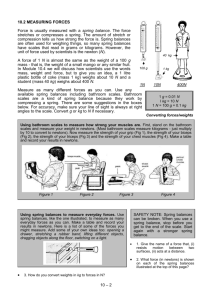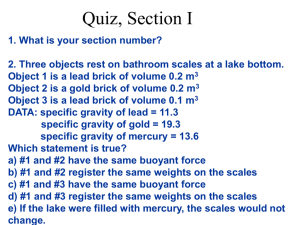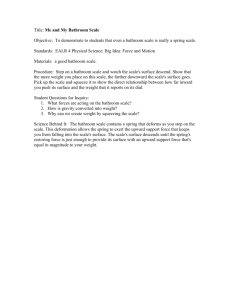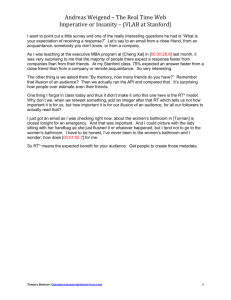Place HOA in: Relationship
advertisement
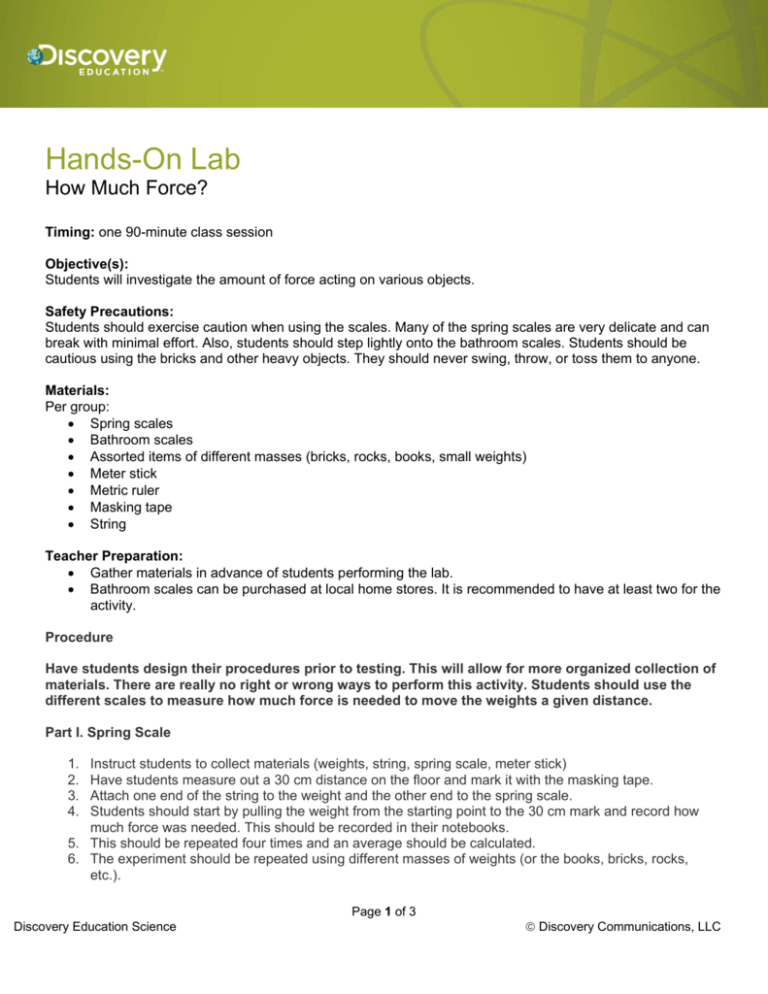
Hands-On Lab How Much Force? Timing: one 90-minute class session Objective(s): Students will investigate the amount of force acting on various objects. Safety Precautions: Students should exercise caution when using the scales. Many of the spring scales are very delicate and can break with minimal effort. Also, students should step lightly onto the bathroom scales. Students should be cautious using the bricks and other heavy objects. They should never swing, throw, or toss them to anyone. Materials: Per group: Spring scales Bathroom scales Assorted items of different masses (bricks, rocks, books, small weights) Meter stick Metric ruler Masking tape String Teacher Preparation: Gather materials in advance of students performing the lab. Bathroom scales can be purchased at local home stores. It is recommended to have at least two for the activity. Procedure Have students design their procedures prior to testing. This will allow for more organized collection of materials. There are really no right or wrong ways to perform this activity. Students should use the different scales to measure how much force is needed to move the weights a given distance. Part I. Spring Scale 1. 2. 3. 4. Instruct students to collect materials (weights, string, spring scale, meter stick) Have students measure out a 30 cm distance on the floor and mark it with the masking tape. Attach one end of the string to the weight and the other end to the spring scale. Students should start by pulling the weight from the starting point to the 30 cm mark and record how much force was needed. This should be recorded in their notebooks. 5. This should be repeated four times and an average should be calculated. 6. The experiment should be repeated using different masses of weights (or the books, bricks, rocks, etc.). Page 1 of 3 Discovery Education Science Discovery Communications, LLC 7. Students should try to pull the different objects to see if the amount of force needed to move them is the same. 8. Instruct students to devise a way to use the spring scale to push the notebooks, and then repeat their tests pushing the objects. Part II. Bathroom Scale 1. Instruct students to place one of the weights onto the bathroom scale and measure the amount of weight it has. 2. This should be repeated with other items, several times to collect enough data to calculate an average. When finished with all the trials, students should calculate the average force needed to move the objects they did. All class data could be written on the board and then discussed. Discussions of gravity and friction are appropriate here. Also, the teacher should explain that the spring scales measure in units called Newtons (a unit of force) and give a brief explanation of how Newtons are calculated. Analysis and Conclusion 1. How does gravity impact the amount of force needed to move the objects? Gravity is the force that is pulling down on things and giving them their weight. The more gravity there is, the harder it is to move them. 2.Was it easier to pull the objects or to push them? Why was this so? There was no difference between pushing and pulling. Since gravity and friction were working in both directions, the amount of force that was needed to move the object was the same. 3. What impacted the readings on the bathroom scale? The readings from the bathroom scale were the result of gravity pulling down on the object. Weight is determined by the mass of an object and by the force of gravity. Page 2 of 3 Discovery Education Science Discovery Communications, LLC In this lab, students will demonstrate the following Inquiry Skills: Design Investigations o Make or use models that: Simulate the real thing that cannot easily be studied or manipulated Have as many details as possible replicated from the real thing Function exactly like or similarly to the real thing. Patterns and Systems o Patterns and change: Patterns in nature may be simple repeating patterns or complex changing patterns Some events can be predicted with certainty, such as sunrise and sunset, and some cannot, such as storms. Page 3 of 3 Discovery Education Science Discovery Communications, LLC


